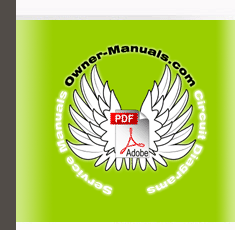|
|
|
Categories
|
|
Information
|
|
Featured Product
|
|
|
 |
|
|
There are currently no product reviews.
 ;
Very,very good manual.It was very explicit and readble.It was helpfull.Thanks.
 ;
The service manual is scanned, but high quality, high resolution. The smallest texts on schematics diagram is readable. Super! Thank you!
 ;
I am satisfied with the service. And if need another manual, i will definitely buy from this site. Keep up the good work.
 ;
have download a number of manuals todate , most are excellant, one or two sometimes a little difficult to read but a least avaialable, great site .
Brad.
 ;
Excellent had everything I wanted, very happy with purchase
THEORY OF OPERATION
2-2-5. Carriage Motor Speed Control Since the carriage motor is a stepping motor, the carriage can be stopped at a desired position by controlling acceleration and deceleration. The carriage can also move backward. The rotational speed of the carriage motor is set by the number of pulses per time unit. The character pitch (horizontal character size) in each print mode is determined by changing this rotational speed (or carriage transfer speed). (1) At start-up of the motor: The number of pulses input to the motor increase in steps, reaching a certain frequency. (2) To stop the motor: The number of pulses input to the motor decreases in steps, in order to gradually bring the motor to a halt. (3) When printing is carried out: Pulses of a uniform pulse width are supplied for printing. 2-2-6. Paper Feed Motor Driving Circuit Again, a stepping motor is employed as the paper feed motor, which turns a certain angle only when a drive pulse is received. This 4-phase stepping motor is controlled by the phase 1-2 excitation method. The following shows the paper feed motor drive circuit and the control signal generated by the phase 1-2 excitation method.
Fig. 2-12 Paper Feed Motor Driving Circuit
� 21 �
|
|
 |
> |
|
